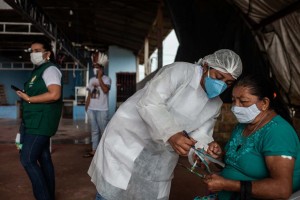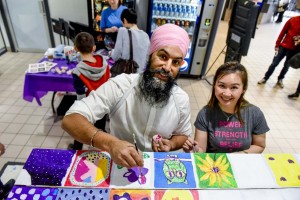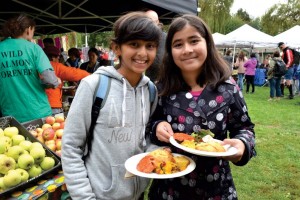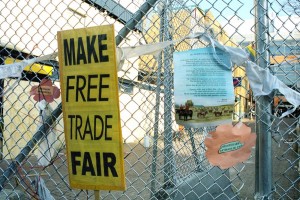Cultural commentators from India to Canada mocked the Trudeau family's visit to India in February. I, too, rolled my eyes at their over-the-top outfits; I looked at the overdone namastes they offered up, and muttered uncharitable words about white people who think that yoga has taught them all about India.
It's always good for Western leaders to show some cultural sensitivity, and if this means that the next generation of Canadians who wander through India looking for the meaning of life think a bit harder about how they dress while there, I'm all for it. But this extravagant romp through India's holiest of holies was more political stunt than anything else: it was all about shoring up support for the Liberals among the 1.2 million Canadians of Indian descent living in Canada.
A POLITICAL STUNT
Think I'm wrong? Consider, if you will, that though the trip seemed to last forever, Team Trudeau never ventured to South India, where lies the beating heart of Indian technology, innovation and cyber-capitalism, but where few blocks of South Indian Indo-Canadian voters are to be wooed.
Instead, accompanied by no less than 14 MPs and half a dozen cabinet ministers (mostly Indo-Canadians or incumbents in ridings with large, mostly Sikh, Indo-Canadian populations), Team Trudeau posed for photos outside iconic Sikh, Hindu and Muslim sites that any diasporic voter would recognize.
Ritual obeisance to Gandhi at Raj Ghat. Check. The Taj Mahal? Check. Akshardham Temple. Check. The Golden Temple. Check. The Jama Masjid. Check. Photo with Indian Opposition Leader Rahul Gandhi, son of former Indian PM Rajiv Gandhi and grandson of former Indian PM Indira Gandhi (not related to the other Gandhi). Check.
Worse still, Trudeau's last and most desired goal was a photo-op with Indian PM Narendra Modi, leader of the right-wing and sometime openly Hindu nationalist Bharatiya Janata Party (BJP). Headlines about their meeting were cringe-worthy: "'Those who misuse religion to divide will not be tolerated,' says Indian PM Modi"(Canadian Press, February 23).
PHOTO-OPS WITH RIGHT-WING LEADERS
Modi was the Chief Minister of Gujarat during the worst religious riot in India's recent history and presided over a state government that turned a blind eye to over 2,000 Muslim deaths. The riots were set off by the killings of dozens of Hindus who were on a train. But the train was returning from a celebration of the pulling down of a mosque that was believed to have been built on the site of an ancient Hindu temple.
One hundred and fifty thousand people — the population of Prince Edward Island — were displaced and ended up in refugee camps. Academics ranging from Martha Nussbaum to Gyan Pandey have called what happened in 2002 a pogrom of ethnic cleansing.
Modi was forced to resign but won re-election handily. Still, in 2005, he was denied visas to Canada and to the U.S., though his election as PM in 2014 changed all that. Stephen Harper hosted Modi on Parliament Hill in 2015, and accompanied him to Toronto and Vancouver, where Modi rallied thousands of Indo-Canadians, with Harper by his side.
Modi was also accompanied during that trip by his best friend in Canadian politics: Patrick Brown, sometime PC party leader in Ontario. Brown and Modi have cemented a relationship that Brown leveraged to win the PC nomination in 2014 and which he hoped would lead him to the Premier's office at Queen's Park. (Not to happen, but that's another story.)
PUSHING PRIVATIZATION
Trudeau, Harper, Brown and Modi have this in common: they all believe in privatizing public assets built up over decades of public investment. Most famously, Modi is putting Air India up for sale. And like Canada, India is heading into another federal election in 2019; if Modi wins, privateers are salivating with an expectation of a massive sale of "public goodies" ranging from infrastructure to resources.
Modi touts India's burgeoning middle class, and Western politicians line up for pieces of this pie; yet, 18 million people perform forced labour in India, which is described as modern slavery.
Modi's government is pro-business, pro-foreign investment and has been steadily weakening labour laws and environmental protections. Lax as the application of these laws may have been, their existence is a bulwark against the unimaginable power of the wealthy in a land where 800 million live in poverty.
Mainstream media have not touched this issue, nor have they raised the problematic clampdown on human rights and free speech by the Modi government. That clampdown is not hard to see, either: in the midst of the hoopla about what the Trudeaus wore and who they posed with for photos, someone on the edge of the crowd made a throwaway reference to arrests in Amritsar.
Little can be said about India that isn't already clichéd, but secularism and human rights there have always been under attack, as much as the country remains a beacon of hope for democracy in the post-colonial world. The Trudeaus went to pay their respects to Gandhi before meeting Modi, not realizing the irony of his murder by Nathuram Godse, a Hindu nationalist member of the RSS (the "service" section of the BJP). Modi came to power as a leader in the RSS. There is a long and complicated history to India that no amount of yoga poses can teach you.
This is not a place to go to play Mr. Dressup. A history like India's will always make for uneasy photo-ops.
Archana Rampure lives in this land we call Canada.














